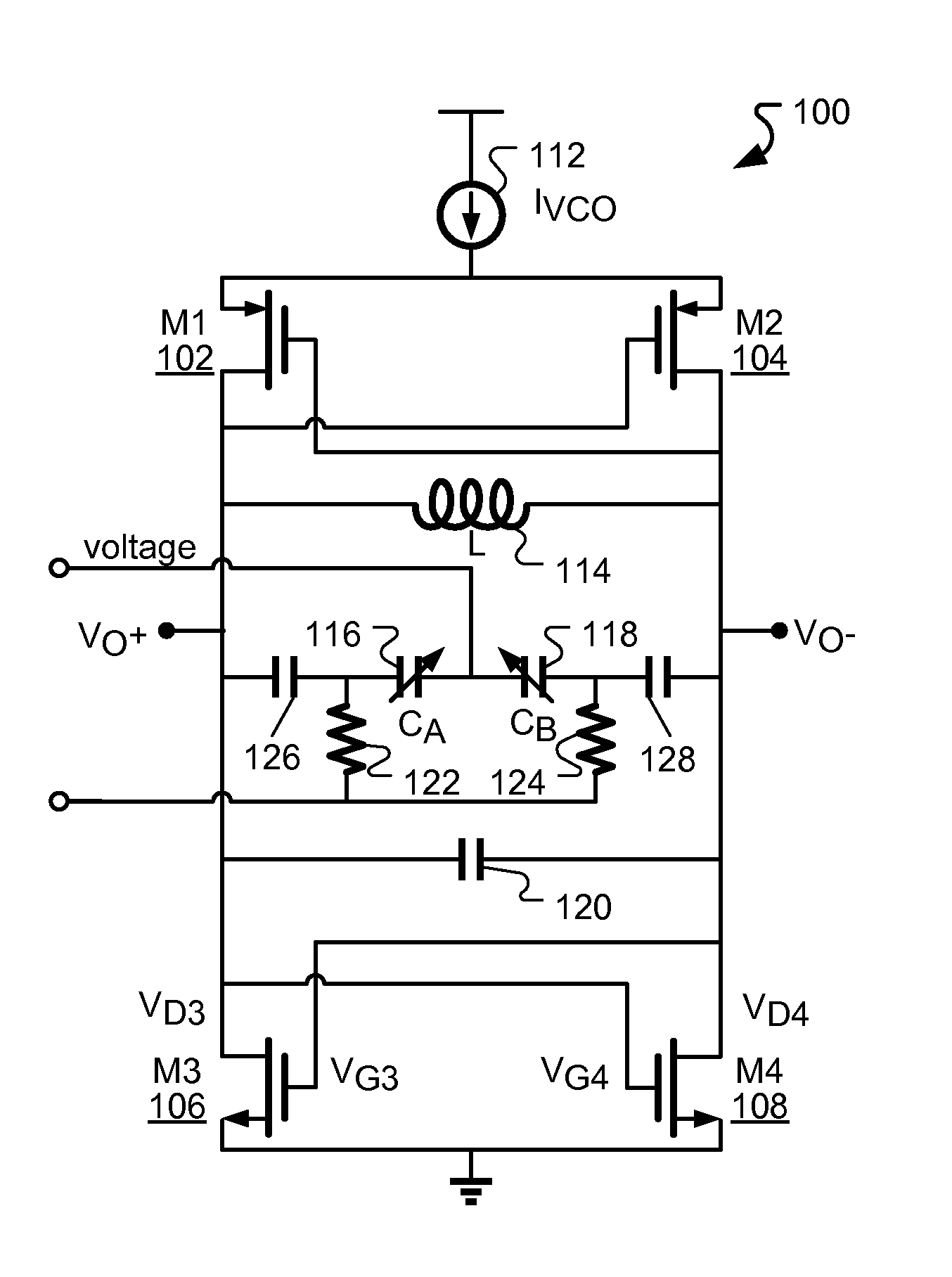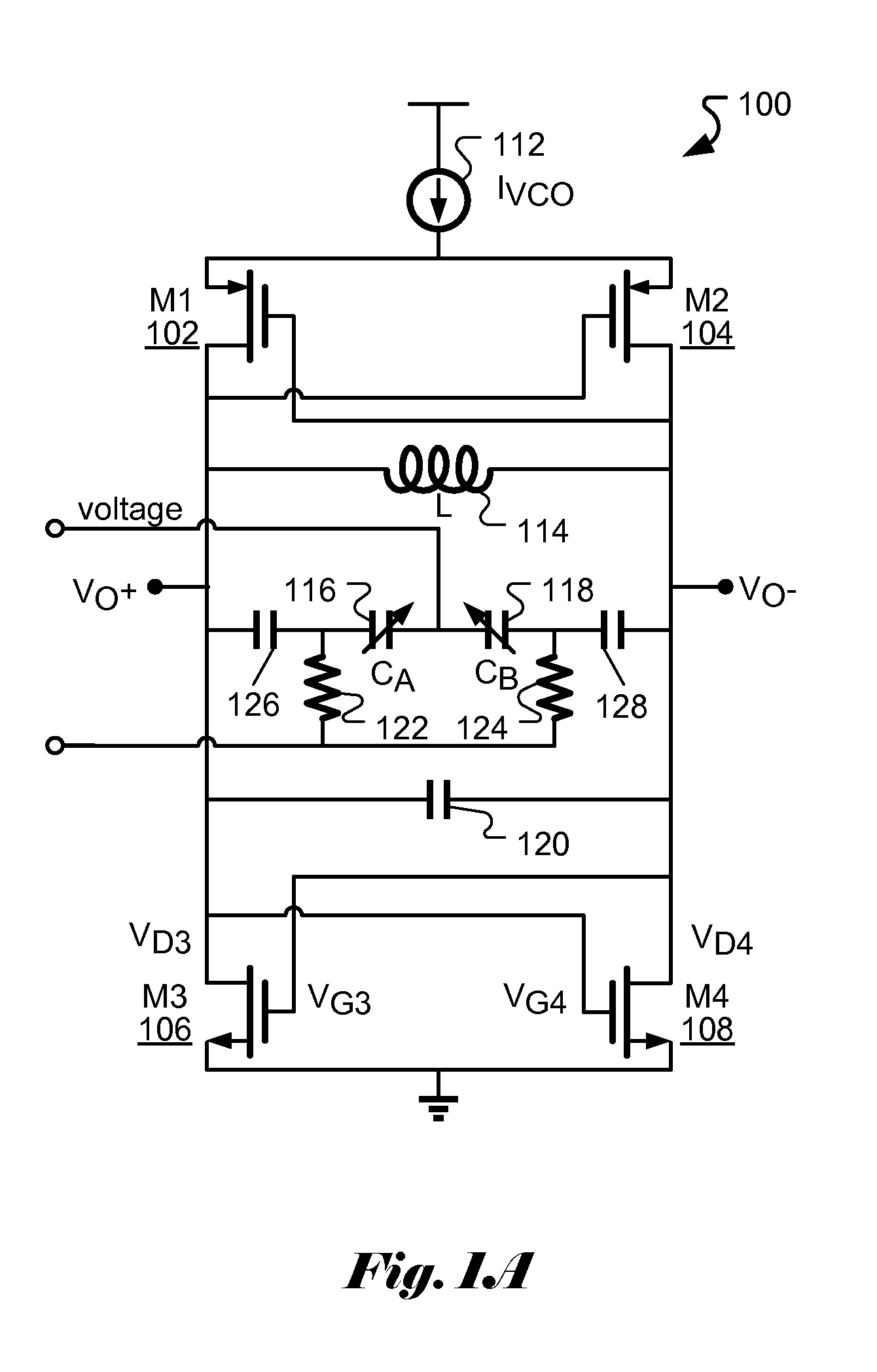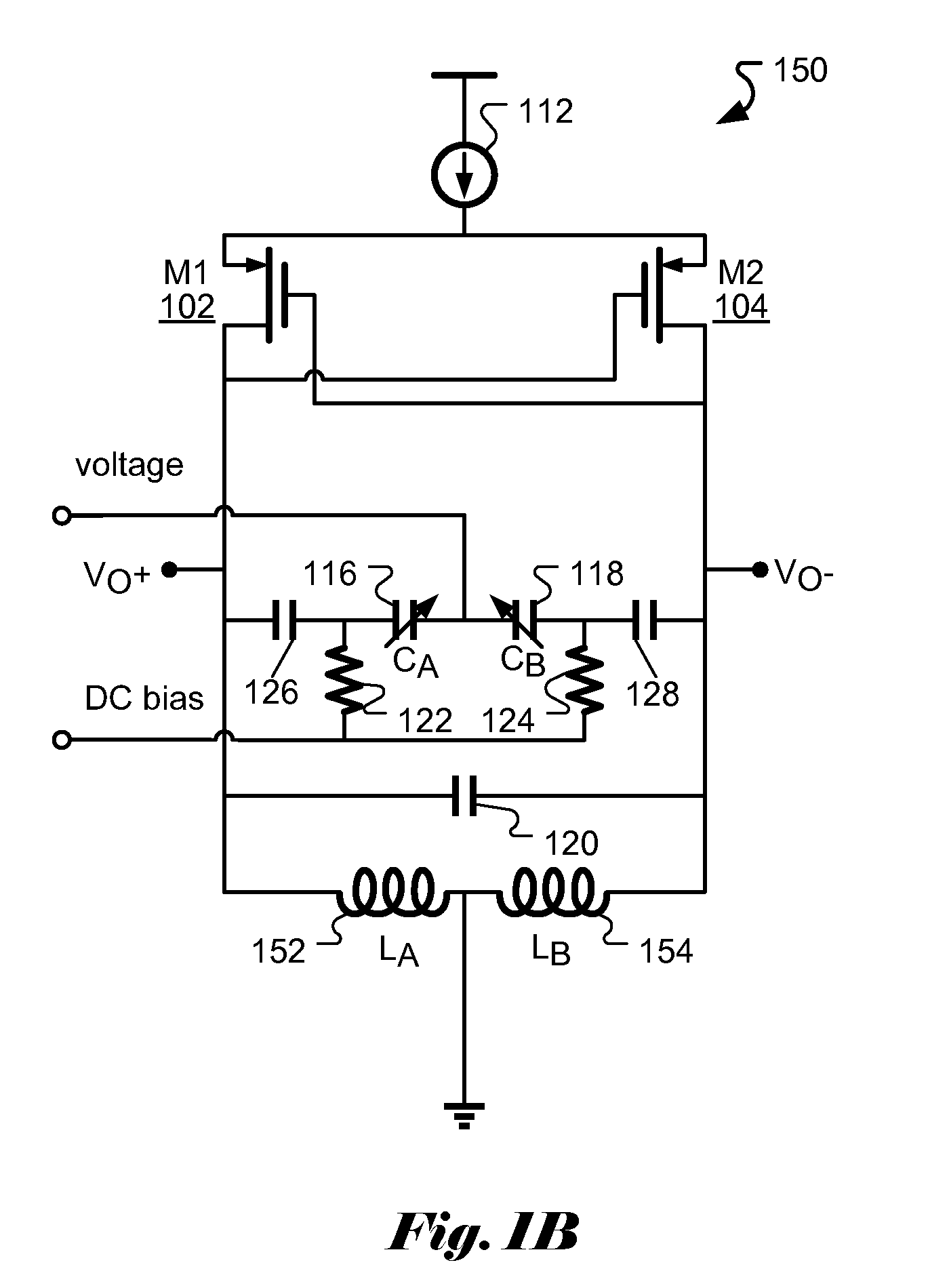Low Noise VCO Circuit Having Low Noise Bias
a low noise, vco circuit technology, applied in the direction of oscillator, pulse generator, pulse technique, etc., can solve the problems of unstable pll loop, inability of varactor to provide desired capacitance value, etc., and achieve the effect of low noise vco circui
- Summary
- Abstract
- Description
- Claims
- Application Information
AI Technical Summary
Benefits of technology
Problems solved by technology
Method used
Image
Examples
Embodiment Construction
[0017]FIG. 1A illustrates an exemplary VCO circuit 100 incorporating an LC tuning circuit to adjust the frequency, wherein a pair of varactors CA 116 and CB 118 is used for fine frequency tuning. The LC tuning circuit comprises an inductor L 114, a fixed capacitor 120, and a pair of adjustable capacitors CA 116 and CB 118. The adjustable capacitors CA 116 and CB 118 are implemented using varactors. A DC bias is supplied to nodes of capacitors CA 116 and CB 118 through respective resistors 122 and 124 and the control voltage is applied to the common node of the two capacitors. Capacitors 126 and 128 serve as DC blocking capacitors to isolate the DC bias voltage from the output nodes VO+ and VO−. The VCO circuit uses cross-coupled transistors M3106 and M4108 as a negative impedance element to cause the LC tuning circuit to oscillate at a desired frequency. In order to increase the efficiency of the VCO circuit, a pair of cross-coupled complementary transistors M1102 and M2104 may also...
PUM
 Login to View More
Login to View More Abstract
Description
Claims
Application Information
 Login to View More
Login to View More - R&D
- Intellectual Property
- Life Sciences
- Materials
- Tech Scout
- Unparalleled Data Quality
- Higher Quality Content
- 60% Fewer Hallucinations
Browse by: Latest US Patents, China's latest patents, Technical Efficacy Thesaurus, Application Domain, Technology Topic, Popular Technical Reports.
© 2025 PatSnap. All rights reserved.Legal|Privacy policy|Modern Slavery Act Transparency Statement|Sitemap|About US| Contact US: help@patsnap.com



